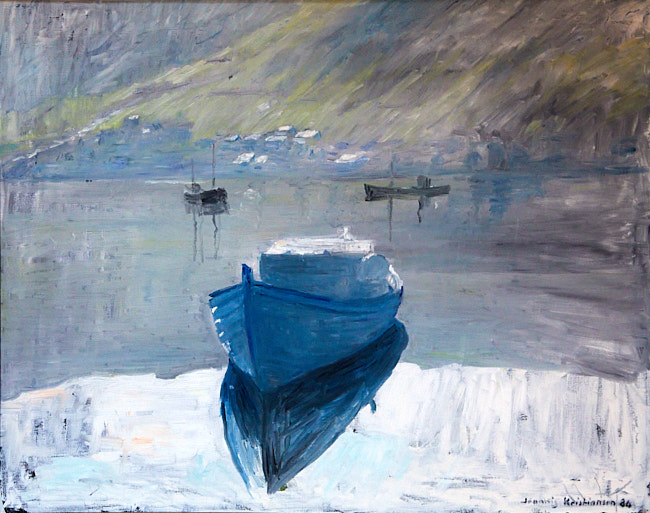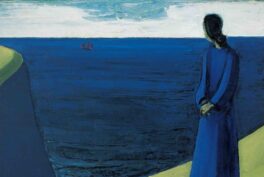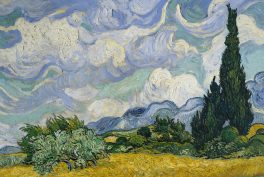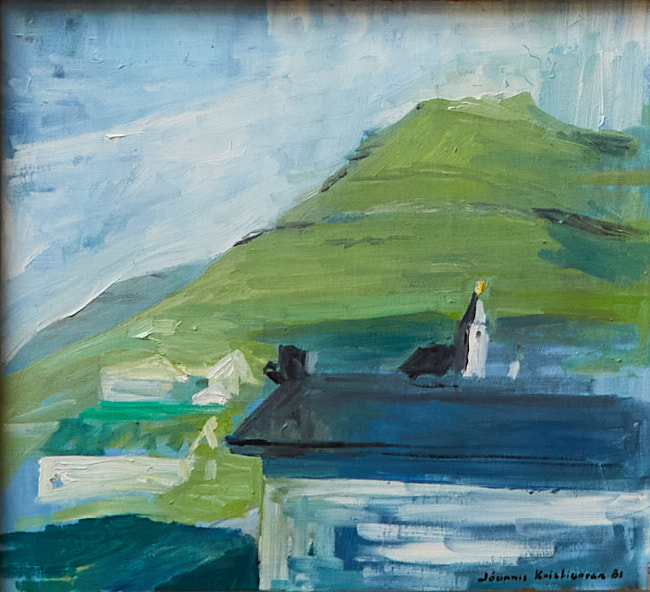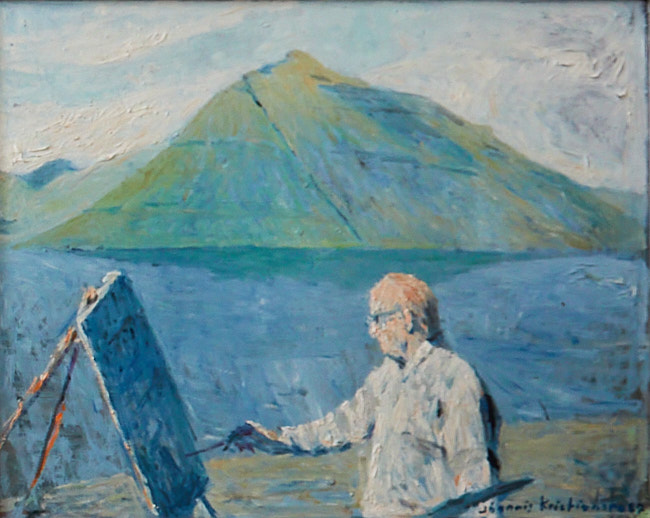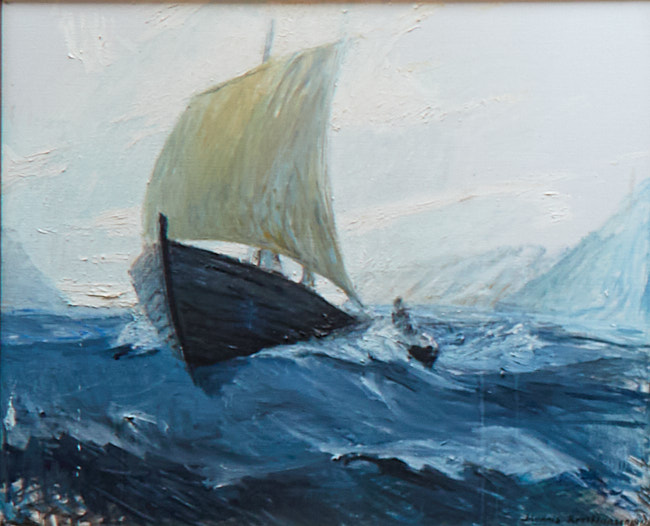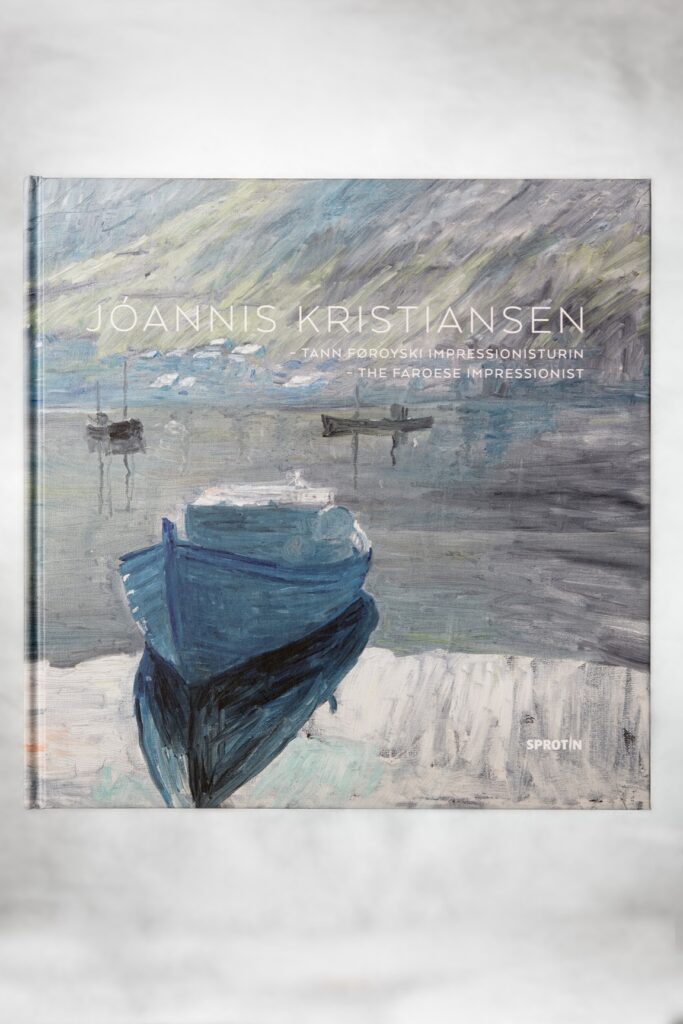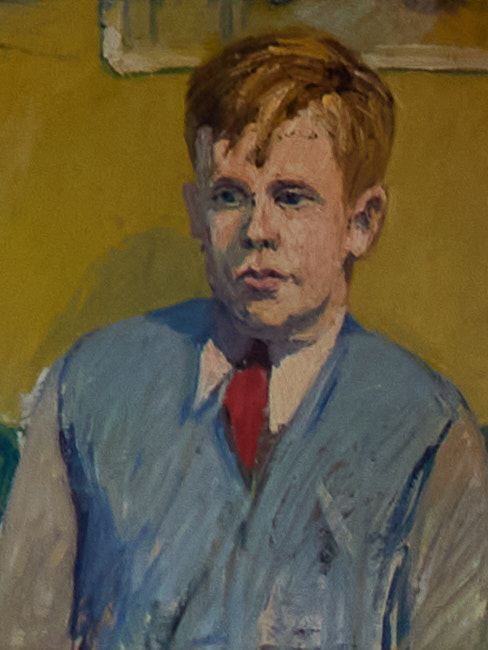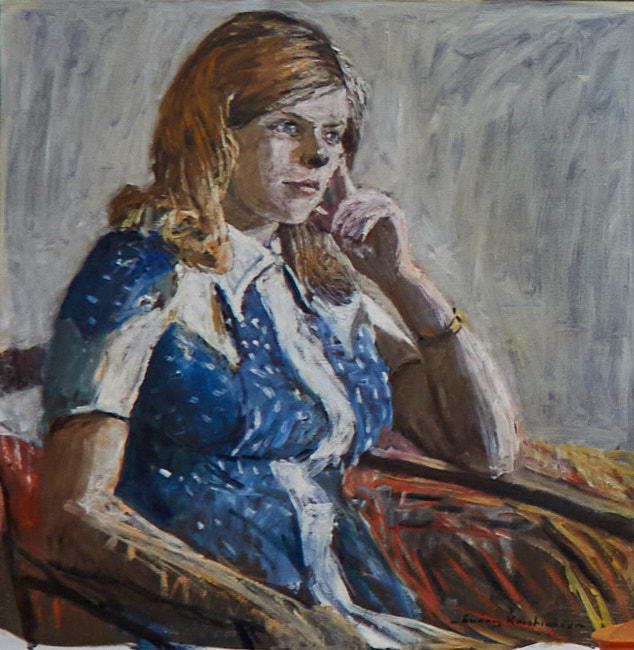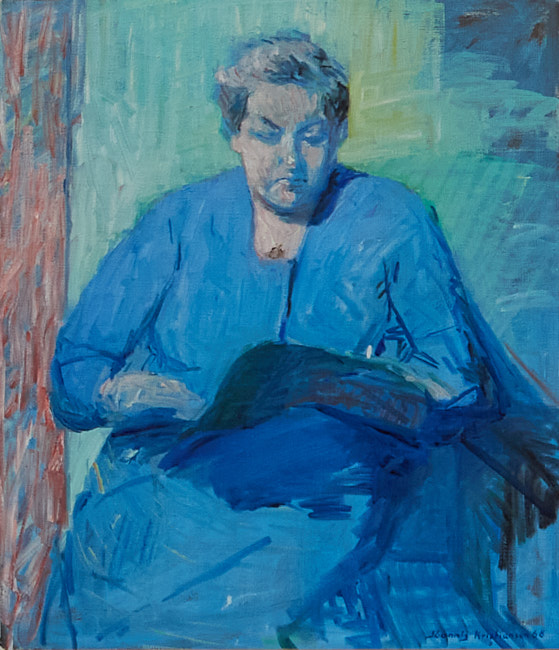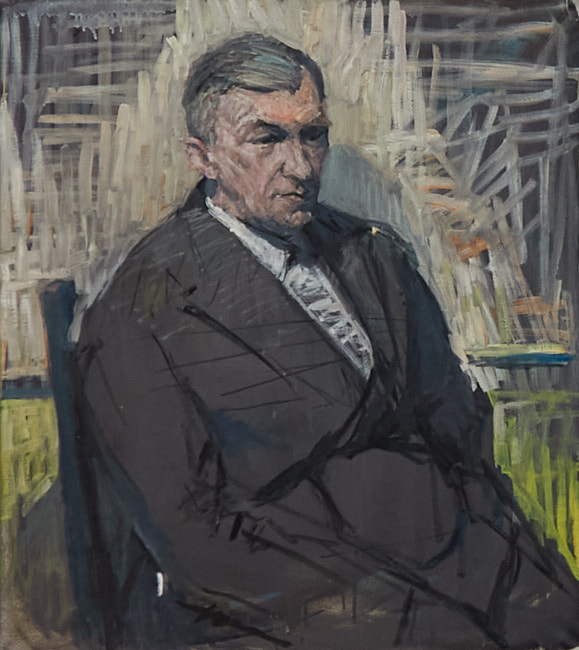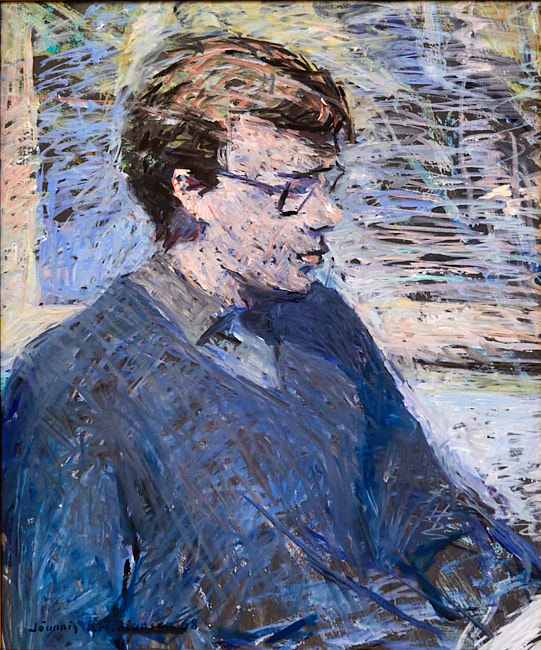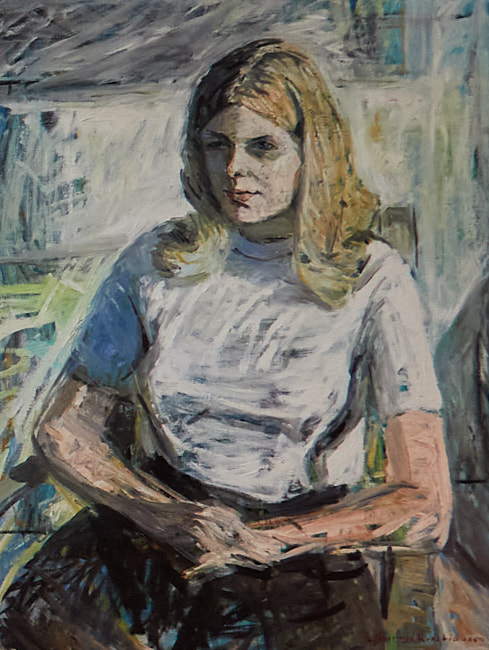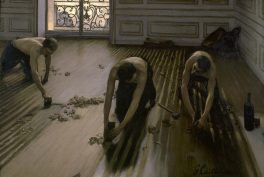A representative of the so-called war generation who is often neglected in both the Faroese and the international reception of Faroese art history. His name is Jóannis Kristiansen. Born in 1918 in the village of Leirvík (east coast of Eysturoy of Faroe Islands), he left the islands at an early age and underwent various artistic training courses in Copenhagen, Denmark.
Shaping the Impressionism in the Land of Maybe
Finally, in 1944, he became a student of the director of the Academy of Arts, Karl Aksel Joergensen. This artist, known for his Post-Impressionist and Social Realist paintings, had a profound influence on Kristiansen.
His studies lasted until 1948. As in Impressionistic paintings on the European mainland, the depiction of atmosphere and light is of central importance in his works. With hasty, broad brushstrokes, he captures the special, cool light of the Faroe Islands in his painting process. He preferred to paint in the fresh air, under the open sky, or as the French Impressionists called it, en plein air.
Painting Outside
In his diary, there are individual sentences that refer to the light, such as: “Everything has been in a sparkling light, which I am gradually catching.” His paintings are snapshots—sketchy yet intense. Kristiansen used predominantly bright colors and an open painting technique. The motifs range from Faroese landscapes and boats to depictions of everyday life and still lifes.
He also painted an altarpiece entitled Jesus in Gethsemane for the church in his home village. It can still be seen there. His choice of motifs and approach often led art historians to call him the Faroese Impressionist. He himself said of his paintings that they spoke for themselves, and that that was probably enough. He succumbed to a protracted cancer in 1988 on the day his last exhibition closed. His works are still popular and sought after today.
Are you in love with Jóannis Kristiansen’s work?
In 2022, Petur Martin Petersen published an illustrated book in honor of the artist. It includes a detailed biography followed by two art-historical reviews. The Faroese art historian Solveig Olsen (National Gallery of the Faroe Islands, Listasavn) wrote an article for the book on light and color in Kristiansen’s paintings. Art historian Jóannes Gaard, on the other hand, discusses Faroese boats and ships in general as a recurring motif in the painter’s work.
The book is also characterized by the comprehensive pictorial documentation of Kristiansen’s artistic work. More than 150 paintings are arranged thematically in this illustrated book and thus provide the first overview of his life’s work. The large format of the book and the high-quality color print make this publication a collector’s item for lovers and fans of Faroese art. The print run is limited.
The illustrated book was published in October 2022 in a Faroese-English and a Danish-German version by the Faroese publisher Sprotin.
